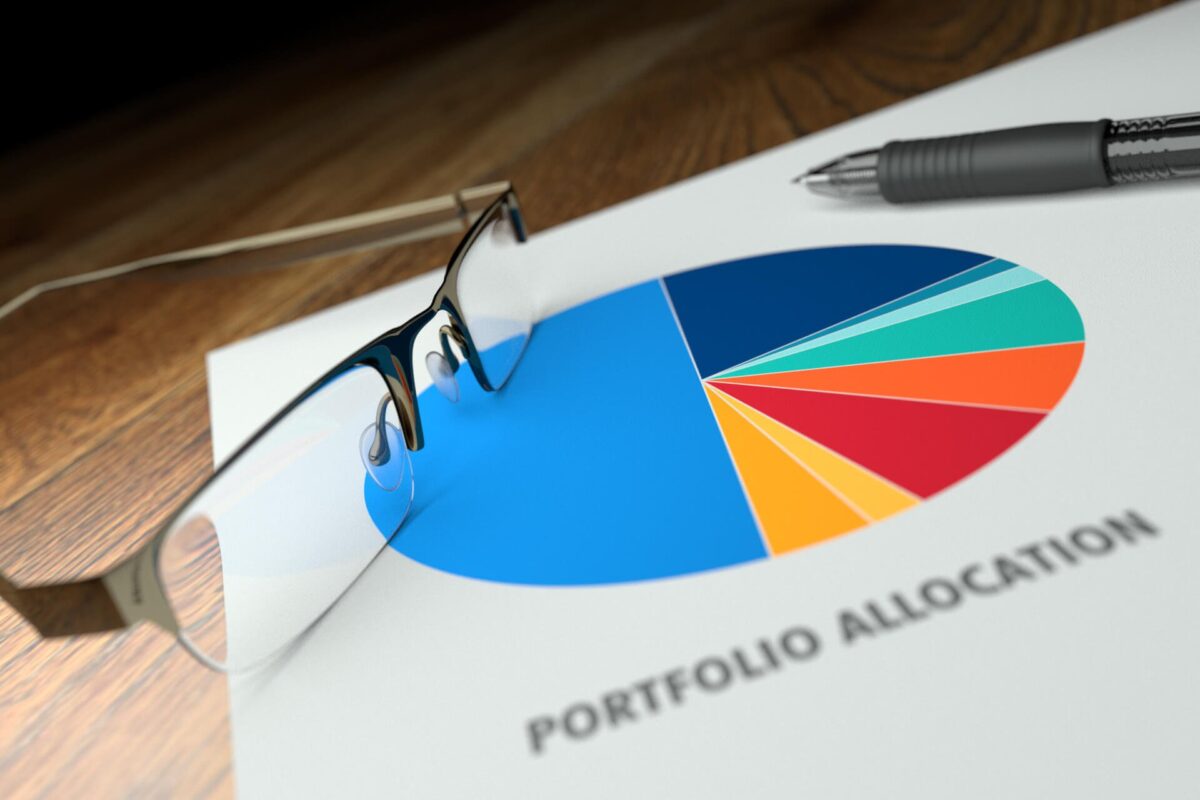The stock market has consistently beaten inflation over the past 100 years. There have been downturns, but the graph has always turned up again after a few years. Stock market investors take the long view because they buy and hold stocks for years. Your insurance company will invest your monthly premiums in stocks.
If you’ve decided to make your savings grow through investing, it’s essential to first determine your investor profile and your investment plan, according to your personality, capital, time horizon and risk tolerance. Very often, investors tend to choose between two main investment strategies: passive portfolio management and active portfolio management.

What is passive investment?
A passive portfolio management uses tools and financial products that mimic the holdings of a specific index or benchmark to achieve similar performance, usually through dedicated funds. That’s why this strategy is often called index fund management.
With passive investing, investors usually invest for the long haul and often adopt a “buy-and-hold” type of strategy. Therefore, there is limited buying and selling, and only a minimum of monitoring the investments. This option is better for those looking to minimize trading costs and spend as little time as possible actively following their investments.
What is active investment?
Active portfolio management is closer to a “hands-on” approach that requires doing some research and picking specific financial assets to build a strong and diversified portfolio that aims at outperforming the market.
With active investing, investors can use different investment horizons, but they often buy and sell different assets to get higher returns than a benchmark, basing their decisions on their forecast and research. Market trends, business and market cycles, monetary and fiscal policies, as well as other specific factors that affect global market’ performance are taken into account to time when to enter and exit the market.

Passive vs Active Portfolio Management – Which one is best?
As with many choices linked to investing and trading, choosing between active or passive investment management comes down to your preferences, priorities, goals, and risk appetite. It’s also essential to consider current and future market cycles to make the best choice.
So, there is more to the question of whether to adopt a passive portfolio management strategy or an active one, as some strategies work best in a relatively stable and predictable trading environment (such as passive investment), while other strategies like dividend, growth, quantamental, and value investing provide better returns when the economy is weakening or when markets are volatile (such as active investment).
Whether you choose passive, active, or a combination of both, it is also important to highlight that retail investors can use short term trading to enhance their passive or active approach, using hedging tools like Contracts For Difference (CFD). According to easyMarkets, a regulated online broker, risk management tools should be used to better protect your capital when trading actively.
While many investors and wealth managers favor one strategy over the other, some investors believe that the use of both can benefit your portfolio and help you reach your financial goals. Depending on market conditions and the opportunities that arise in different markets and market sectors, mixing both passive and active strategies can help investors get the best of both worlds by leveraging the strengths of both approaches, in accordance with market conditions.

Reducing Risk
Millions of Americans have turned to day trading during the Covid-19 crisis, but most have lost money because they jumped in without research. Online trading does have risks, but you can increase the chance of profit by putting in some time to learn how to trade successfully.
Forget the tips you read in the Sunday papers or on financial blogs. As a new trader, you have zero experience and are at a disadvantage. You need to pay for information. Trading advisors have spent years honing their craft. You have to pay to get the benefit of their experience. Choose one advice service and stick with it for at least a few months, keep records and see if following the advice is profitable enough to pay for the subscription.
You want to grow your savings, not lose them. There will always be some risk in any trade, but sensible traders will work hard to reduce the risk to the minimum.
Here are a few questions you should ask yourself when considering a trade:
- Can you consult your partner? If you can’t then forget the trade. You might have lost a potential profit, but these are your joint savings, and you might have lost part of them by acting impetuously.
- Can we afford to lose this stake? Trades do go wrong, and you should only use a small part of your savings to trade with, and each trade should be a small portion of your trading fund.
- What are we looking for here? What profit can you reasonably expect?
- Would this trade give you too much exposure to any one market sector? You need to spread your trades across different sectors, so a crash in one only means a small loss in your day’s trades.
- What profit will you sell at? Set your Take-Profit position automatically. You haven’t made a profit until the money is in your bank account. Don’t wait too long to exit a trade. Once it has reached your ‘reasonable profit’ target, get out of it.
- What loss will you sell at? Set your Stop-Loss position automatically. Failing to set an automatic stop-loss position could lead to you losing all your stake. Much better to take a small loss and come back another day.
- Can you exit the trade today? You should NEVER hold on to a trade overnight. Bad news could come in while the market is closed leading to tomorrow’s opening price being a long way below today’s closing price.

Your Takeaways
Stock trading is a serious business. Your savings will disappear quickly if you treat it as a game. You can reduce your risks, but there will never be certainty in any trade you plan. Education and research are the two keys to reducing the chances of losing money.





